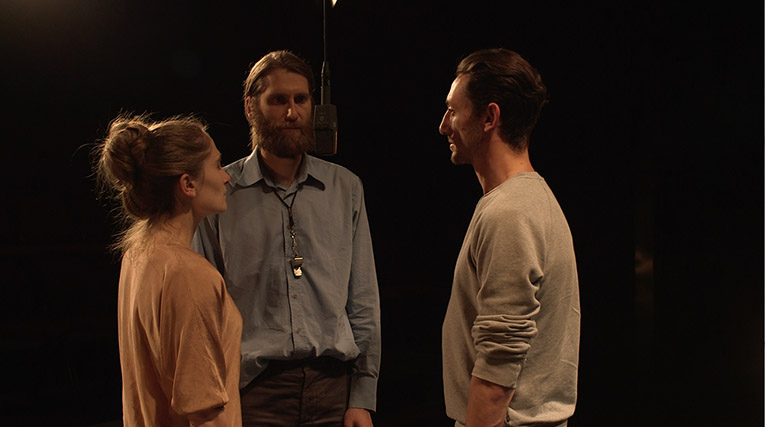Eleni Kamma participe à l’exposition L’Intru (Invaders) organisée à Londres par Rich Mix. Vernissage le 12 décembre.
L’INTRU (INVADERS) is a multidisciplinary exhibition and performance program that deals with issues of post-colonialism, memory, identity and narration.
Gathering together artists originally from Portugal, England, Rwanda, Greece, Germany, Argentine, Hungary, Spain, Serbia, Poland and Taiwan, who work in performance, object, photography, video and installation, L’INTRU aims to question these potent issues: postcolonialism, personal and collective memory, narration and identity. It not only asks who the invaders are, it also speaks of the personal narratives that these forces provoke within the individual. After a successful run in Vienna, the exhibition is being brought to London with the intention of engaging with local issues: capitalism, gentrification and the cuts. Join us for a packed performance program, on the front row will be some of the most prominent London artists.Curated by Ana Mendes
ARTISTS
Anamaria Kardos, Ana Mendes, Carla Cruz, Antonio Contador, Eleni Kamma, Franziska Becher, Justyna Scheuring, Mario Asef, Ishimwa Muhimanyi, Rosana Antoli, Hsinyen Wei and Sandra Djukic.
It takes courage and breath to speak up
HD video, color, stereo sound, 16:9, NL, 2014, 5 min 59 sec
The work It takes courage and breath to speak up features autonomously as a possible prologue of the exhibition, encouraging a thoughtful approach from the start. In this video work, Kamma reflects on the Greek ‘parrhesia’ or freedom of speech, a notion that stands for the expression of opinion while also alluding to an obligation to speak out in service of the greater good — in spite of the vulnerability that the individual may experience as a consequence. The choreographic movement of the camera captures three performers who occupy a theatre space representing a typical public agora. They come together as a community and together summon the courage to voice their thoughts freely, ultimately disbanding to forge their own paths.
Yar bana bir eğlence’ is the customary opening sentence in traditional Turkish shadow theatre, Karagöz. The central theme in this form of street theatre, which remained immensely popular until the late 18th Century, is the amusing interaction between the two protagonists. Hacivat embodies the better- educated well-to-do in society, while Karagöz is the outspoken representative of the man on the street, venting his opinions through ‘parrhesia’. This projected image stokes the imagination, but it is the voice of the narrator that assumes the more dominant role. The narrator utters what the people dare not speak but still wish to hear. He airs their grievances regarding social injustices. He freely criticises from the shadows of local politics, commanding an almost preposterous level of expressive freedom in a totalitarian regime such as the Ottoman Empire. During her residency in Istanbul in 2013, Kamma witnessed the civil protests in Taksim Gezi Park. It struck her that a clear link could be made between the way in which the public space is currently taking a new shape and how it did so in the Ottoman era: through ‘parrhesia’ and political satire, public participation and humour. A keenly relevant observation of current affairs that she has translated into her most recent work.
[sociallinkz]
